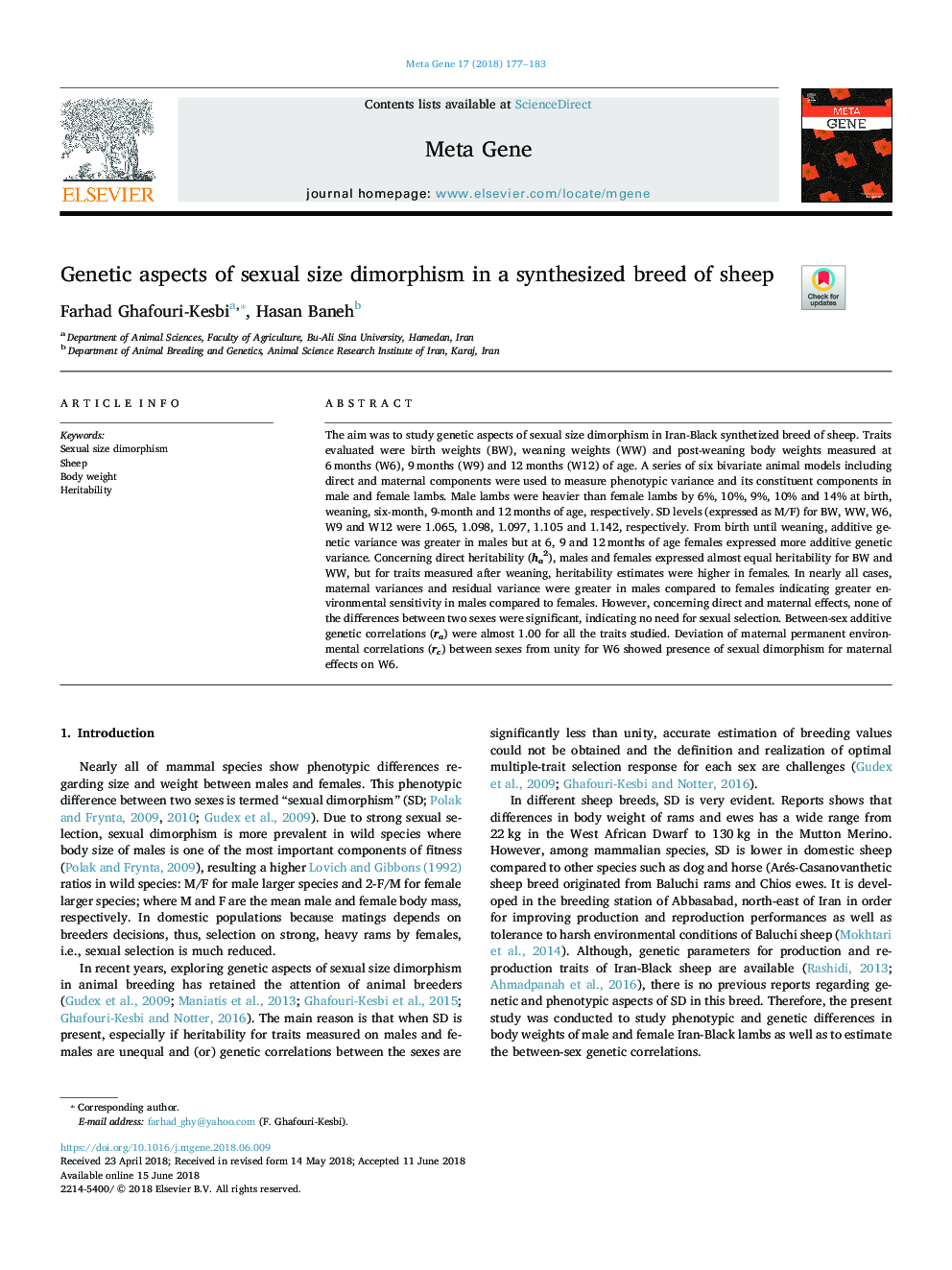| Article ID | Journal | Published Year | Pages | File Type |
|---|---|---|---|---|
| 8389099 | Meta Gene | 2018 | 7 Pages |
Abstract
The aim was to study genetic aspects of sexual size dimorphism in Iran-Black synthetized breed of sheep. Traits evaluated were birth weights (BW), weaning weights (WW) and post-weaning body weights measured at 6â¯months (W6), 9â¯months (W9) and 12â¯months (W12) of age. A series of six bivariate animal models including direct and maternal components were used to measure phenotypic variance and its constituent components in male and female lambs. Male lambs were heavier than female lambs by 6%, 10%, 9%, 10% and 14% at birth, weaning, six-month, 9-month and 12â¯months of age, respectively. SD levels (expressed as M/F) for BW, WW, W6, W9 and W12 were 1.065, 1.098, 1.097, 1.105 and 1.142, respectively. From birth until weaning, additive genetic variance was greater in males but at 6, 9 and 12â¯months of age females expressed more additive genetic variance. Concerning direct heritability (ha2), males and females expressed almost equal heritability for BW and WW, but for traits measured after weaning, heritability estimates were higher in females. In nearly all cases, maternal variances and residual variance were greater in males compared to females indicating greater environmental sensitivity in males compared to females. However, concerning direct and maternal effects, none of the differences between two sexes were significant, indicating no need for sexual selection. Between-sex additive genetic correlations (ra) were almost 1.00 for all the traits studied. Deviation of maternal permanent environmental correlations (rc) between sexes from unity for W6 showed presence of sexual dimorphism for maternal effects on W6.
Related Topics
Life Sciences
Biochemistry, Genetics and Molecular Biology
Biochemistry, Genetics and Molecular Biology (General)
Authors
Farhad Ghafouri-Kesbi, Hasan Baneh,
